Themed collection Materials Horizons 10th anniversary regional spotlight collection: Asia-Pacific

Nanoarchitectonics: a new materials horizon for nanotechnology
A paradigm shift from nanotechnology to nanoarchitectonics has been proposed.
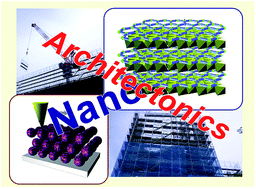
Mater. Horiz., 2015,2, 406-413
https://doi.org/10.1039/C5MH00012B
The impact of nanoparticle shape on cellular internalisation and transport: what do the different analysis methods tell us?
This focus article looks at how nanoparticle shape affects cellular internalisation of nanoparticles and what different analysis methods can tell us.

Mater. Horiz., 2019,6, 1538-1547
https://doi.org/10.1039/C9MH00664H
When defects become ‘dynamic’: halide perovskites: a new window on materials?
If defects in materials cost more (energy) than decomposing them, defect densities will be low and thermodynamically controlled, with the right kinetics, as for halide perovskites.
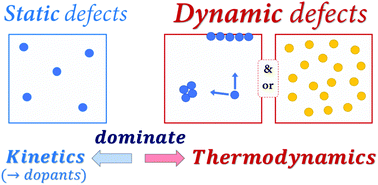
Mater. Horiz., 2019,6, 1297-1305
https://doi.org/10.1039/C9MH00606K
Metal–organic frameworks for chemical sensing devices
An emerging trend in the application of metal–organic frameworks is to engineer mobile devices to possess chemical detecting capabilities for environmental monitoring, point-of-care testing, artificial intelligence, food security and defence.

Mater. Horiz., 2021,8, 2387-2419
https://doi.org/10.1039/D1MH00609F
Advances in ultrasensitive piezoresistive sensors: from conventional to flexible and stretchable applications
This paper comprehensively reviews methods and approaches to enhance the piezoresistive effect, ranging from the quantum physical effect and new materials to nanoscopic and macroscopic structures, and from conventional rigid to soft electronic applications.
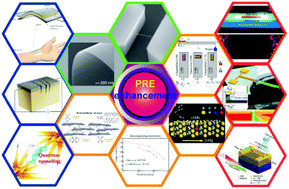
Mater. Horiz., 2021,8, 2123-2150
https://doi.org/10.1039/D1MH00538C
Recent development of covalent organic frameworks (COFs): synthesis and catalytic (organic-electro-photo) applications
The review focuses on recent developments in the synthetic methodologies of COFs and their applications in the field of organocatalysis, electrocatalysis and photocatalysis. Future scope of COFs in the field are also described.
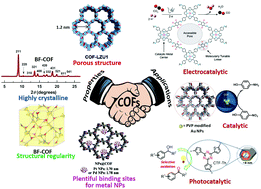
Mater. Horiz., 2020,7, 411-454
https://doi.org/10.1039/C9MH00856J
Solar-driven photothermal nanostructured materials designs and prerequisites for evaporation and catalysis applications
Solar-driven photothermal conversion by nanostructured materials is a direct solar energy conversion process that has been used as a novel strategy to augment vaporization and catalysis performance.
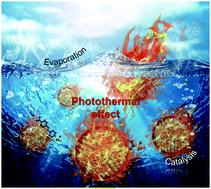
Mater. Horiz., 2018,5, 323-343
https://doi.org/10.1039/C7MH01064H
Photocatalytic fixation of nitrogen to ammonia: state-of-the-art advancements and future prospects
The state-of-the-art developments in the photocatalytic reduction of N2 to NH3 are presented by classifying the photocatalysts based on chemical composition. Additionally, the correlation between the modification of catalysts and their photocatalytic activity is highlighted.

Mater. Horiz., 2018,5, 9-27
https://doi.org/10.1039/C7MH00557A
Metal organic framework based catalysts for CO2 conversion
Metal organic frameworks (MOFs) are hybrid crystalline materials, exhibiting high specific surface areas, controllable pore sizes and surface chemistry.
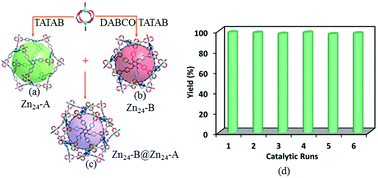
Mater. Horiz., 2017,4, 345-361
https://doi.org/10.1039/C6MH00484A
Developing extended visible light responsive polymeric carbon nitrides for photocatalytic and photoelectrocatalytic applications
Polymeric carbon nitride (CN) has emerged as an attractive material for photocatalysis and photoelectronic devices.
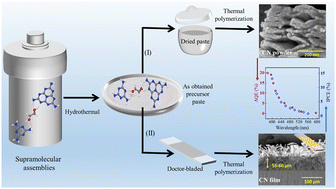
Mater. Horiz., 2023,10, 1363-1372
https://doi.org/10.1039/D3MH00016H
Multifunctional sound-absorbing and mechanical metamaterials via a decoupled mechanism design approach
We report a new paradigm, via a decoupled approach, in the design of acousto-mechanical multifunctional metamaterials.
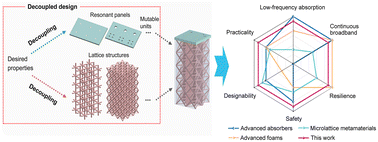
Mater. Horiz., 2023,10, 75-87
https://doi.org/10.1039/D2MH00977C
An ultra high performance, lead-free Bi2WO6:P(VDF-TrFE)-based triboelectric nanogenerator for self-powered sensors and smart electronic applications
A triboelectric nanogenerator based on bismuth tungstate (Bi2WO6):polyvinylidene fluoride-trifluoroethylene (P(VDF-TrFE)) is fabricated. It delivers an output voltage (open circuit) of 205 V and current density (short circuit) of 11.91 mA m−2 at ∼0.15 kgf without any electric poling.

Mater. Horiz., 2022,9, 663-674
https://doi.org/10.1039/D1MH01606G
Enhancement of linearity range of stretchable ultrasensitive metal crack strain sensor via superaligned carbon nanotube-based strain engineering
Linearity range of a crack-based strain sensor is dramatically enhanced while maintaining its ultrahigh mechanosensitivity by introducing an intermediate superaligned carbon nanotube sheet.
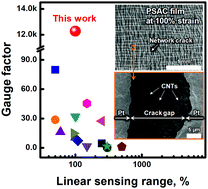
Mater. Horiz., 2020,7, 2662-2672
https://doi.org/10.1039/D0MH00806K
Monitoring supported lipid bilayers with n-type organic electrochemical transistors
An n-type, accumulation mode, microscale organic electrochemical transistor monitors the activity of a pore-forming protein integrated into a lipid bilayer.
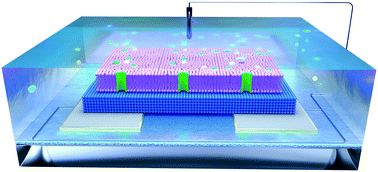
Mater. Horiz., 2020,7, 2348-2358
https://doi.org/10.1039/D0MH00548G
Deep learning aided rational design of oxide glasses
Designing new glasses requires a priori knowledge of how the composition of a glass dictates its properties such as stiffness, density, or processability. Developing multi-property design charts, namely, glass selection charts, using deep learning can enable discovery of novel glasses with targeted properties.
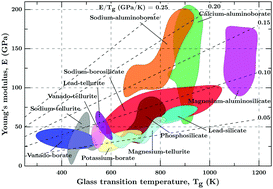
Mater. Horiz., 2020,7, 1819-1827
https://doi.org/10.1039/D0MH00162G
A bipolar host based high triplet energy electroplex for an over 10 000 h lifetime in pure blue phosphorescent organic light-emitting diodes
Ultimate device performances of blue phosphorescent organic light-emitting diodes, an external quantum efficiency of 27.6%, a device lifetime over 10 000 h at 100 cd m−2, and CIE (0.12, 0.13), were achieved by employing an electroplex host.
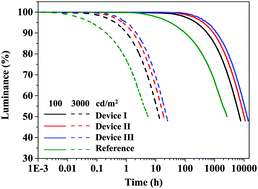
Mater. Horiz., 2020,7, 559-565
https://doi.org/10.1039/C9MH01268K
Anomalous polarization switching and permanent retention in a ferroelectric ionic conductor
Ionic conduction in a ferroelectric leads to anomalous polarization switching kinetics but prevents retention failure.

Mater. Horiz., 2020,7, 263-274
https://doi.org/10.1039/C9MH01215J
Nanoarchitectured metal–organic framework/polypyrrole hybrids for brackish water desalination using capacitive deionization
Metal–organic framework/polypyrrole hybrids are synthesized and directly used in capacitive deionization for the first time.
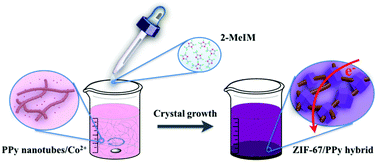
Mater. Horiz., 2019,6, 1433-1437
https://doi.org/10.1039/C9MH00306A
A serotonin-modified hyaluronic acid hydrogel for multifunctional hemostatic adhesives inspired by a platelet coagulation mediator
Serotonin-conjugated hyaluronic acid hydrogel inspired by platelet coagulation provides a multifunctional hemostatic adhesive mediating highly effective hemostasis and preventing abnormal tissue adhesion.
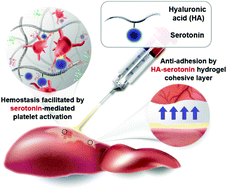
Mater. Horiz., 2019,6, 1169-1178
https://doi.org/10.1039/C9MH00157C
Pseudocapacitance contribution in boron-doped graphite sheets for anion storage enables high-performance sodium-ion capacitors
The high pseudocapacitance contribution in boron-doped graphite sheets for anion storage is demonstrated, and then utilized to fabricate Na-ion hybrid capacitors.
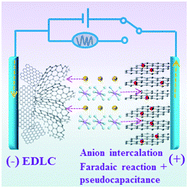
Mater. Horiz., 2018,5, 529-535
https://doi.org/10.1039/C8MH00156A
High performance photosensitizers with aggregation-induced emission for image-guided photodynamic anticancer therapy
A series of D–A′–π–A type photosensitizers were designed and synthesized to show strong aggregation-induced far red and near infrared emission and very effective 1O2 generation simultaneously, and have been successfully used for image-guided photodynamic anticancer therapy.
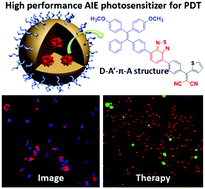
Mater. Horiz., 2017,4, 1110-1114
https://doi.org/10.1039/C7MH00469A
A new class of chiral semiconductors: chiral-organic-molecule-incorporating organic–inorganic hybrid perovskites
Chiral organic–inorganic hybrid perovskites exhibiting circular dichroism were prepared as a new class of chiral semiconductors.
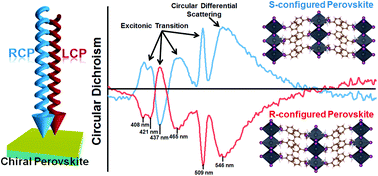
Mater. Horiz., 2017,4, 851-856
https://doi.org/10.1039/C7MH00197E
Controlling the exciton lifetime of blue thermally activated delayed fluorescence emitters using a heteroatom-containing pyridoindole donor moiety
We demonstrate a promising molecular design approach to achieve short exciton lifetime, small singlet and triplet energy splitting and high photoluminescence quantum yield in thermally activated delayed fluorescence emitters for high quantum efficiency and low efficiency roll-off characteristics in OLEDs.
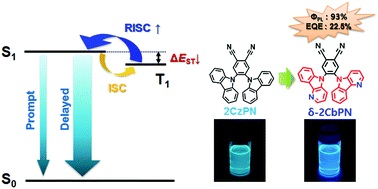
Mater. Horiz., 2017,4, 619-624
https://doi.org/10.1039/C6MH00579A
A unified understanding of charge transport in organic semiconductors: the importance of attenuated delocalization for the carriers
The generalized Einstein relation (GER) can unify various theoretical models and predict charge transport in OSCs with various crystallinities, by altering the variance of the density of states and the delocalization degree in a Gaussian-distributed density of states.

Mater. Horiz., 2017,4, 608-618
https://doi.org/10.1039/C7MH00091J
Efficient triplet–triplet annihilation upconversion in binary crystalline solids fabricated via solution casting and operated in air
Binary crystalline solids via solution casting under rapid drying conditions were found to show efficient triplet–triplet annihilation upconversion by suppressing the segregation of the components.

Mater. Horiz., 2017,4, 83-87
https://doi.org/10.1039/C6MH00413J
Post-annealing of MAPbI3 perovskite films with methylamine for efficient perovskite solar cells
Post-annealing of MAPbI3 perovskite films with methylamine improves both efficiency and stability of perovskite solar cells.

Mater. Horiz., 2016,3, 548-555
https://doi.org/10.1039/C6MH00160B
Volume-invariant ionic liquid microbands as highly durable wearable biomedical sensors
Non-volatile and flow properties of ionic liquids allow for simple ‘fill and seal’ approach to fabricate high-performance wearable sensors without materials delamination or cracking.
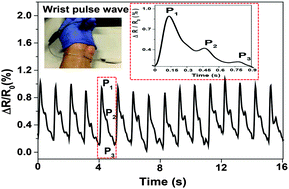
Mater. Horiz., 2016,3, 208-213
https://doi.org/10.1039/C5MH00284B
All-carbon solid-state yarn supercapacitors from activated carbon and carbon fibers for smart textiles
A wearable wristband from knittable two-ply yarn supercapacitors with high specific length capacitance.
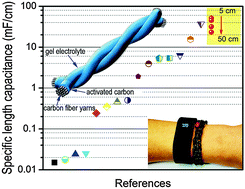
Mater. Horiz., 2015,2, 598-605
https://doi.org/10.1039/C5MH00108K
VO2 nanoflake arrays for supercapacitor and Li-ion battery electrodes: performance enhancement by hydrogen molybdenum bronze as an efficient shell material
VO2 nanoarrays are grown on graphene foam and the surface is coated with HMB for performance enhancement as LIB and supercapacitor electrodes.
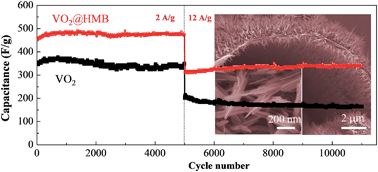
Mater. Horiz., 2015,2, 237-244
https://doi.org/10.1039/C4MH00212A
Graphene oxide dispersions: tuning rheology to enable fabrication
Ultra-large graphene oxide sheets exhibit unique viscoelastic properties, making them a new class of soft material. We provide fundamental insights enabling development of various fabrication techniques utilizing this 2D material.

Mater. Horiz., 2014,1, 326-331
https://doi.org/10.1039/C3MH00144J
A six-carbazole-decorated cyclophosphazene as a host with high triplet energy to realize efficient delayed-fluorescence OLEDs
A high triplet energy (ET) host material, hexakis(9H-carbazol-9-yl)cyclotriphosphazene (PzCz), is used in high-efficiency organic light-emitting diodes (OLEDs). PzCz (ET = 3.00 eV) functions as an effective host for thermally activated delayed fluorescence (TADF) molecules, resulting in high external electroluminescence quantum efficiencies.
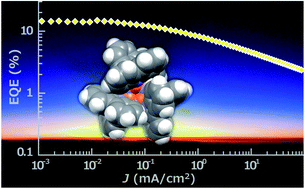
Mater. Horiz., 2014,1, 264-269
https://doi.org/10.1039/C3MH00079F
About this collection
To celebrate the 10th anniversary of Materials Horizons we have curated a collection of our most popular articles with corresponding authors based in the Asia-Pacific region. For Materials Horizons it is of great importance that we represent a truly diverse array of authors and their research, to learn from each other and develop global strategies to conquer the most pressing issues in materials science. We would like to take this opportunity to thank all our contributors from the Asia-Pacific region for continuing to provide high quality research to Materials Horizons. We strive to continue our work together to increase visibility of important research happening in these regions, taking steps towards making the world a better place.
This five-part series will be showcasing some of our very best authors from across 5 regions: